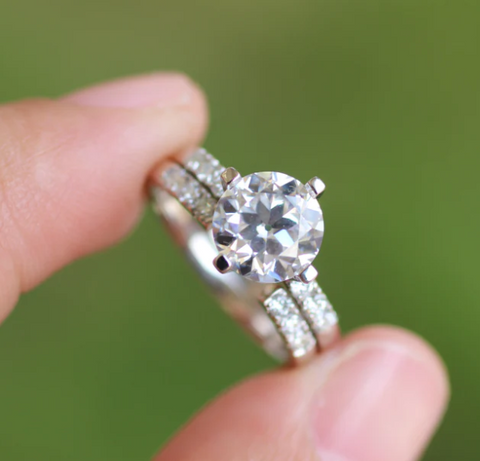Characteristics and styles of old European cutting techniques
·Old European cut technology is an ancient and exquisite diamond cutting technology that originated in Europe in the 18th century. This cutting technique has been used extensively over the centuries and is still highly regarded and cherished today. Old European cut diamonds are known for their unique characteristics and eye-catching styles. This article will delve into the characteristics of Old European cutting techniques, historical background, and several typical styles.

Characteristics of old European cut technology
Symmetry: Old European cut diamonds are known for their remarkable symmetry, with well-balanced proportions of facets and corners. This symmetry allows the diamond to fully display its internal brilliance and produce extremely high refraction and refractive index.
Large Platform: Old European cut diamonds have a relatively large platform, which refers to the flat part at the top. This large platform allows the diamond to absorb more light and reflect it back to the viewer's eye, creating a stunning sparkle effect.
Deep Cut: Old European cut diamonds typically have a relatively deep cut, which allows them to give a heavy texture while revealing the color and sparkle within.
Historical background of old European cutting techniques
Origin: Old European cutting technology originated in Europe in the 18th century, when there were no modern mechanical equipment and processes. Master cutters can only rely on manual operations to accurately cut diamonds.
Development: In the 19th century, with the development of mechanical technology, old European cutting technology was gradually replaced by modern cutting technology. However, old European cut diamonds are still highly preferred due to their unique advantages of symmetry and brilliance.
Revival: In recent years, more and more jewelers and diamond collectors have begun to refocus on old European cut diamonds and seek out craftsmen who can recreate this ancient technique. This resurgence has made old European cut diamonds once again a sensation in the jewelry world.
Typical old European cutting style
Cushion Shape: Cushion Shape is a unique style of old European cut diamonds that have a rounded appearance but slightly curved edges, giving it a soft and romantic feel. This style is commonly used in engagement rings and various fine jewelry designs.
Emerald Cut: Another typical style of old European cut diamonds, the Emerald Cut has four corners and four sides cut, giving it a square or rectangular appearance. This style is very popular in antique diamond and vintage style jewelry designs.
Buddha's Heart: One of the rarest and unique styles of Old European cut diamonds, Buddha's Heart is known for its special heart-shaped silhouette. This style represents love and compassion and is often used in the design of jewelry and souvenirs.
Old European cutting techniques are highly sought after for their unique features and eye-catching styles. Its symmetry, large platform and deep cut give the diamond extremely high optical properties and visual effects. As an ancient and precious craft, Old European cut diamonds have played an important role in history and have experienced a renaissance in recent years. Cushion Shape, Emerald Cut and Buddha's Heart are several typical old European cutting styles, and they all show unique appearance and charm. Whether in the design of an engagement ring, jewelry or keepsake, Old European cut diamonds add a sense of history and unique character to the piece.






